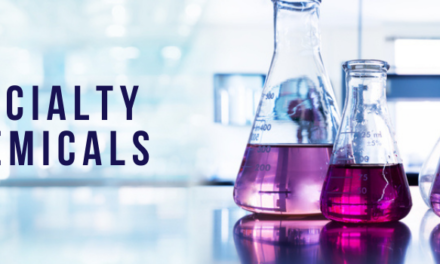The consumer chemicals sector, which includes products used in everyday life such as cleaning products, personal care items, cosmetics, and home care products, faces several significant challenges. These challenges arise from various factors, including changing consumer preferences, regulatory pressures, environmental concerns, and technological developments. Below are some of the major challenges facing the consumer chemicals sector today:
1. Environmental Impact and Sustainability
- Waste and Packaging: One of the primary concerns is the environmental impact of packaging waste, especially plastics. The industry faces increasing pressure to move toward sustainable packaging solutions (e.g., biodegradable, recyclable, or reusable materials) and reduce the carbon footprint of packaging.
- Chemicals and Toxicity: Many consumer chemicals contain ingredients that can be harmful to the environment when they are disposed of improperly. There is growing concern about the toxicity of certain chemicals used in products, such as phthalates, parabens, and formaldehyde in personal care products, or chlorine-based bleach in cleaning products.
- Green and Eco-friendly Products: As consumers become more environmentally conscious, there is a growing demand for eco-friendly and sustainable consumer chemicals. Companies must invest in R&D to create formulations that are biodegradable, free of harmful chemicals, and sustainably sourced, which requires a shift in manufacturing practices and sourcing raw materials.
- Regulatory Pressure: Governments and international organizations are introducing stricter regulations around the environmental impact of chemicals. Laws such as REACH (Registration, Evaluation, Authorization, and Restriction of Chemicals) in the European Union and various environmental standards globally require consumer chemicals companies to comply with new safety and environmental guidelines.
2. Health and Safety Concerns
- Ingredient Transparency: Consumers are increasingly interested in knowing what ingredients are in the products they use, especially when it comes to personal care and cosmetics. There is growing demand for clean label products, which means manufacturers must disclose all ingredients and avoid controversial substances.
- Health Impacts: Certain chemicals in consumer products have been linked to health risks, such as endocrine disruption or skin irritation. For example, triclosan and phthalates in personal care products, or volatile organic compounds (VOCs) in cleaning products, are under scrutiny for their potential health effects.
- Allergens and Sensitizers: The presence of allergens in cosmetics and cleaning products is an ongoing concern, especially with increasing consumer awareness of allergies to ingredients such as fragrances, preservatives, and colorants. Manufacturers are under pressure to develop hypoallergenic and non-toxic formulations.
3. Changing Consumer Preferences
- Demand for Natural and Organic Products: Consumers are increasingly opting for natural, organic, and plant-based alternatives to traditional consumer chemicals. This trend is particularly strong in the personal care and cleaning products markets, where consumers seek products that are perceived as healthier, safer, and more sustainable.
- Personalization and Customization: There is a growing trend toward personalized and customized products, especially in the personal care and beauty sectors. Consumers want products tailored to their specific needs, such as skin type, hair type, or specific health concerns (e.g., anti-aging or acne treatment). This trend requires manufacturers to offer a wider variety of formulations and adapt quickly to consumer demands.
- E-commerce and Direct-to-Consumer Models: The shift toward online shopping and direct-to-consumer (D2C) sales channels presents both opportunities and challenges. Companies must invest in digital marketing, e-commerce platforms, and logistics systems to compete in this evolving retail environment.
4. Regulatory and Compliance Pressures
- Stringent Regulations: The consumer chemicals sector is highly regulated, with manufacturers required to comply with local and international safety standards. Regulations around chemical formulations, product labeling, and testing are continually evolving, requiring companies to stay up to date and often invest in reformulation or additional testing to ensure compliance.
- Global Regulatory Variations: Navigating the differences in regulations between countries can be a complex challenge for multinational companies. A product that meets safety and regulatory requirements in one country may not be acceptable in another due to differing standards. For example, the U.S. Food and Drug Administration (FDA) and European Medicines Agency (EMA) have different guidelines for personal care product safety.
- Supply Chain Complexity: As consumer chemicals are subject to various regulations across different regions, managing supply chains for raw materials and finished goods requires careful coordination to meet these compliance requirements. Companies must ensure that raw materials are sourced from approved suppliers and meet local regulatory standards.
5. Cost Pressures and Raw Material Availability
- Fluctuating Raw Material Prices: The price volatility of raw materials, particularly petrochemical derivatives (used in many consumer chemicals), is a major challenge for manufacturers. Global supply chain disruptions, such as those caused by geopolitical tensions, natural disasters, or pandemics, can further exacerbate this issue.
- Availability of Raw Materials: Scarcity of certain raw materials, such as palm oil (used in many cosmetic formulations) or sustainable surfactants, poses a challenge for companies seeking to meet consumer demand for natural and eco-friendly products while maintaining profitability.
- Cost of Compliance: Adhering to evolving safety and environmental regulations can lead to increased production costs, which may be passed on to consumers. Companies must balance the desire for product innovation with the need to maintain competitive pricing.
6. Competition and Market Saturation
- Brand Loyalty vs. Innovation: Many segments of the consumer chemicals market, especially in personal care and home cleaning, are highly competitive and often saturated with established brands. Companies must differentiate their products through innovation, sustainability initiatives, or unique formulations to maintain consumer loyalty.
- Private Label Products: The rise of private-label or store-brand products has intensified price competition. Retailers are increasingly offering their own branded products, often at lower prices, which puts pressure on consumer chemical companies to either reduce costs or provide superior value to justify higher prices.
7. Technology and Digital Transformation
- Digitization and Automation: The consumer chemicals sector is increasingly leveraging technology to improve efficiency, streamline operations, and enhance customer experiences. This includes using digital tools for marketing, customer engagement, and inventory management. Companies are also investing in automation and artificial intelligence (AI) to improve manufacturing processes and product development.
- Sustainability through Technology: The demand for sustainable production methods is driving investment in new technologies that can reduce energy consumption, water usage, and waste. Companies are investing in more sustainable manufacturing processes, such as bio-based chemical production and circular economy practices.
8. Supply Chain Disruptions
- Global Supply Chain Issues: The COVID-19 pandemic, geopolitical tensions, and natural disasters have highlighted the vulnerability of global supply chains. Shortages of key raw materials, logistics bottlenecks, and fluctuating transportation costs can disrupt product availability and affect pricing.
- Sourcing Ethical and Sustainable Materials: With rising consumer demand for ethically sourced and sustainably produced ingredients, the sourcing of materials becomes more complex. Companies must ensure that raw materials come from certified suppliers and comply with ethical standards, such as fair labor practices and responsible environmental stewardship.
Conclusion
The consumer chemicals sector faces numerous challenges, including sustainability pressures, regulatory compliance, shifting consumer preferences, and supply chain complexities. To succeed in this competitive and dynamic environment, companies must focus on innovation, product safety, sustainability, and efficiency. By adapting to changing market trends and addressing consumer concerns, businesses can enhance their growth potential and meet the evolving demands of the modern consumer.
Hashtags
#ConsumerChemicalsChallenges #ChemicalRegulations #SustainableChemicals #SupplyChainIssues #IngredientTransparency #ToxicFreeProducts #EnvironmentalImpact #EcoFriendlyChemicals #RegulatoryCompliance #WasteReduction #SustainabilityInChemicals #ConsumerTrust #CleanLabelChallenges #EthicalChemicals #ResourceScarcity #GreenChemistry #ChemicalSafety #CircularEconomyInChemicals #InnovationInChemicals #SustainablePackaging

















